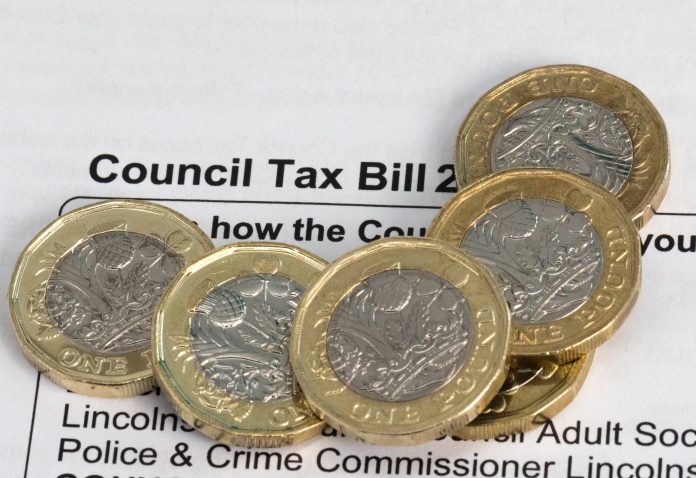Paul Rudd, Director of Service Design at Civica, discusses the three-step approach local authorities should consider when dealing with COVID’s impact on council tax arrears
We’ve seen new types of council tax and business rates debtor emerge as a result of the pandemic. To recover funds in a way that is both practical and sensitive to the positions that citizens and businesses find themselves in, local authorities will benefit from a personalised approach that’s based on data.
COVID-19 has impacted local authority budgets in a way that’s never been seen before. Previously dependable revenues from services like car parking fell off a cliff early in the pandemic and have yet to recover. Council tax and business rates payments have also been severely impacted as citizens and businesses have struggled with their finances. Conscious of the difficulties facing local communities, many councils suspended recovery and enforcement actions – with some councils not even sending ‘soft’ reminders to late payers.
Local authorities across the country now face £4.4bn in arrears (a figure that increased £841m last year). Following on from Croydon, Slough has been the most recent authority to issue a s114 notice within a year, indicating in July 2021 that its budget cannot be balanced.
Although some local authorities’ lost revenue is not recoverable, such as parking fees for example, council tax arrears are a crucial resource for rebuilding their damaged finances. The recovery process however needs to be appropriate to the difficult financial circumstances many reliable council taxpayers have found themselves in as a result of the pandemic.
Emerging debtors
Many of today’s debtors are people who have always paid before. They may be in arrears because of COVID-related illness or the furlough scheme has reduced their income.
Having never been in this type of debt, they may not know what to do or where to turn for support. But when they recover or return to normal employment, they are likely to return to being regular payers. The same effect has been seen in business debtors. Once-reliable customers are going through similar financial distress yet are likely to return to regular payment when their businesses are back on their feet. Heavy-handed enforcement and recovery actions could push both personal and business debtors over the edge when all they may need is more time to pay.
A smarter approach to debt recovery
It’s clear that for these new debtors, a different approach is needed. The good news is that most councils already sit of a wealth of insightful data which can help inform what the approach should be. By rethinking how they collect, manage and use their data, local councils can tackle council tax arrears in a way which is sustainable and in the best interests of everyone concerned. To do this, they need to follow three simple, but crucial steps:
- Clearly identify different types of debtor. Local authorities hold insightful data on customers, particularly in relation to council tax: for example, how much they pay, when they pay, when they settle arrears and their current liability. This alone can be used to understand what types of debtor a local authority has. For example, Civica’s Recovery Matrix can filter this data and align it with ‘propensity to pay’ data: this can identify defaulters who would pay if referred to debt recovery, and help understand why other non-payers are not paying.
Credit reference agencies have scoring solutions, of course: but they can skew results because they focus more on credit card payments and bring in data such as postcode-level information that’s not unique to an individual customer. These services also cost money, whereas a council’s data is a free and a readily usable resource.
Debtors can also be further segmented by looking at their overall financial position, not just council tax arrears. For example, if this shows large and consistent debt for a citizen across services, with multiple years of arrears, then a traditional debt recovery is likely to be the best route. Civica’s Single View of Debt software can create this picture and also help councils to comply with Breathing Space legislation and guidance on supportive collection.
- Tailor recovery. As we’ve seen, one size for debt recovery does not fit all. The ability to apply debt segmentation is therefore key to a more successful and sometimes sympathetic recovery strategy. For example, there may be debtors who are not paying the current year but are paying prior-year or prior accounts; debtors who meet key vulnerability criteria; debtors have never been in arrears before; or debtors who are in receipt of council tax reductions. In each case, data-driven techniques enable local authorities to use the recovery actions most appropriate to the unique circumstances of a citizen or business.
- Increase your support capacity. Many local authorities are recognising the need to shift from collections to support in order to deal effectively with the new debtors that the pandemic has produced. Ideally, this is a job for skilled teams but with headcounts under pressure and a continuing need to have ‘all hands-on deck’, it’s not always easy to move staff onto this higher-value work. Services such as Civica’s OnDemand Resource can free up capacity without the need to hire or redeploy people.
All local authorities have two things in common today. They are focused on council tax arrears as they try to balance the books; and they all hold a huge store of valuable data on citizens and businesses. This resource can help them take a targeted and effective approach to recover revenue and securing their finances so they can continue to deliver high-quality services for local communities and businesses.











